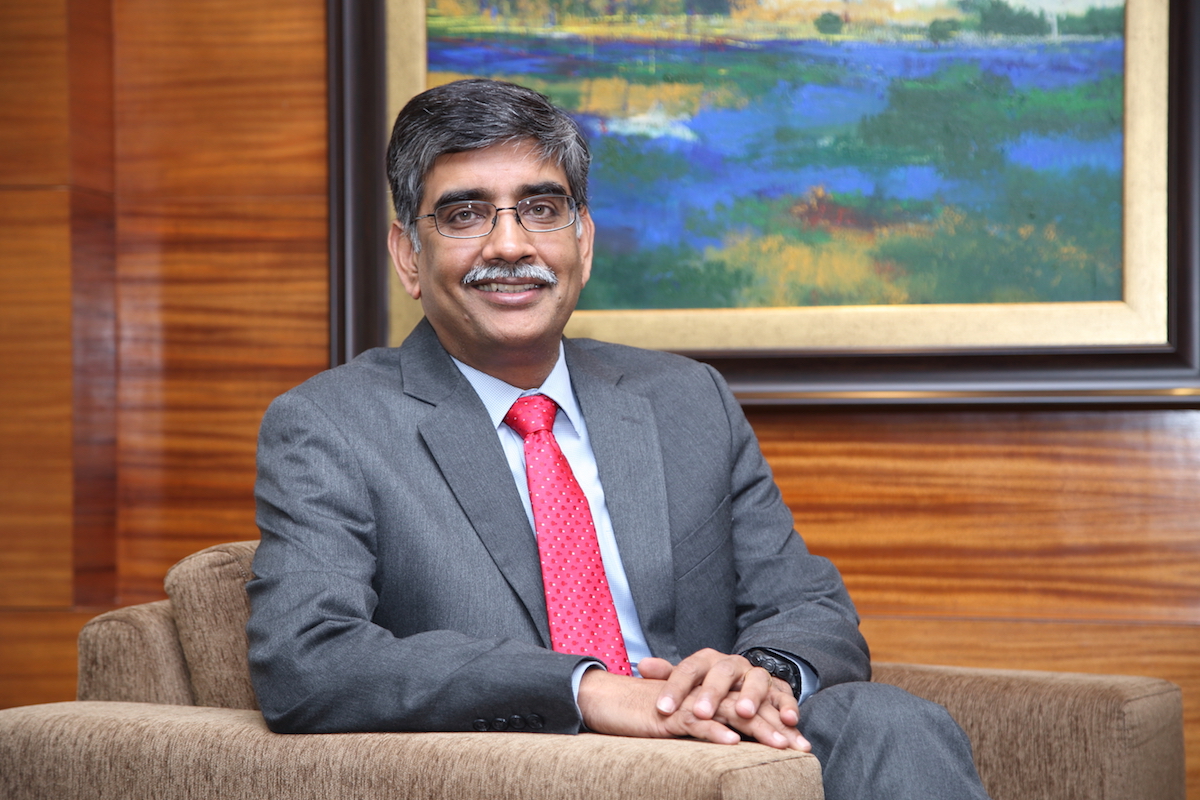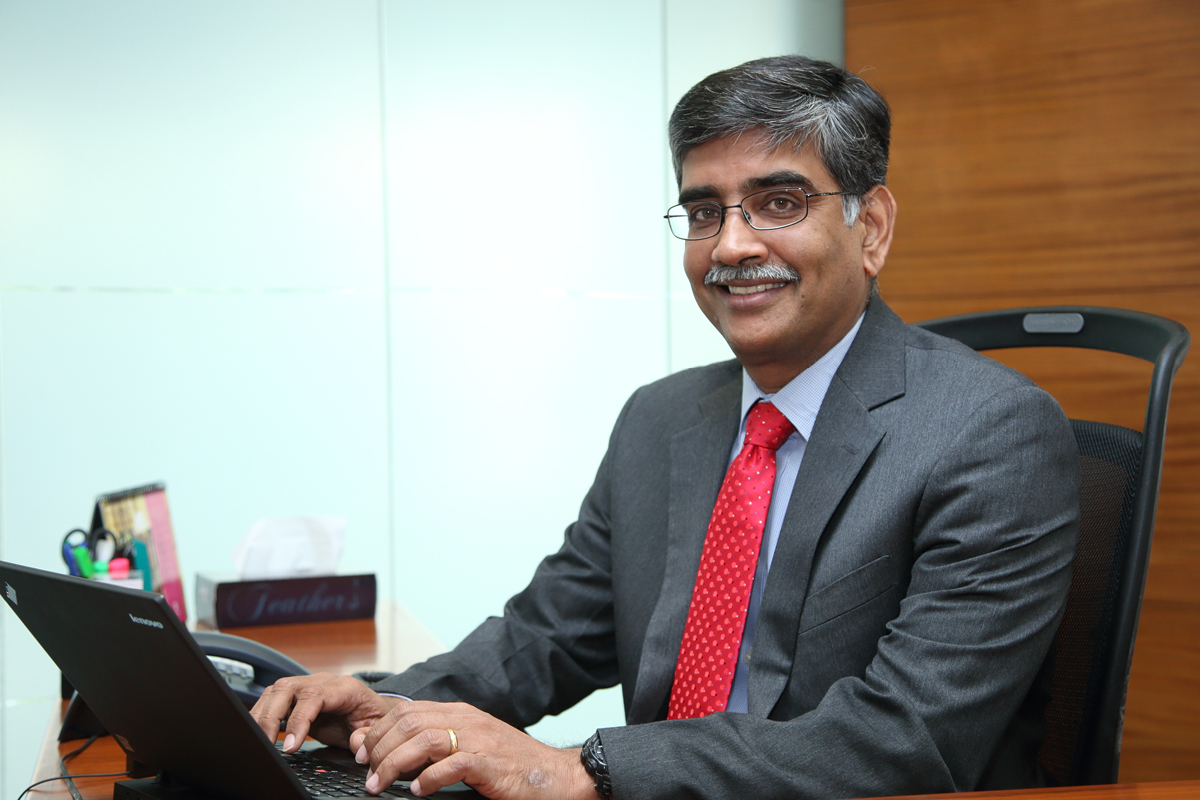Headquartered in Gurgaon, Whirlpool of India Limited (WOI) is one of the leading manufacturers and marketers of major home appliances in the country.
A subsidiary of global powerhouse Whirlpool Corporation, the company provides refrigerators, washing machines, air-conditioners, air and water purifiers, microwave ovens, and built-in kitchen appliances for the people of India, working out of 3 state-of-the-art manufacturing facilities at Faridabad, Pondicherry and Pune.
PepsiCo veteran Sunil D’Souza was appointed managing director for WOI in mid 2015, bringing with him more than 22 years of leadership in consumer-driven industries across Asia.
Speaking with The CEO Magazine, Sunil shares how he is spearheading the company’s growth into new product categories across both the mass and premium markets, the importance of strengthening foundations, and what the current economic indicators for India suggest for the years ahead.
The CEO Magazine: How did you feel upon being appointed managing director for WOI in June 2015, coming from a different region and industry?
Sunil: I was honoured. I’ve only been in this industry for around 18 months now, so it’s all new for me, but I think I have a decent handle on it. I joined WOI right after spending 15 years with PepsiCo, based outside of India, working mostly in general management roles, the last one being the VIMAPS Region – Vietnam, Cambodia, Myanmar, Laos, Malaysia, Singapore, Indonesia, Brunei, Mongolia and the Pacific Islands.
Prior to that, I’d worked with Coca Cola. WOI carries an enormous legacy: the company has been manufacturing and selling quality refrigerators and washers in India for more than 20 years now. We were one of the first multinational players in the market, so I’m proud to be a part of it.
During your time with the company, what changes have you seen implemented?
In the past year, we have increased the emphasis on product development within our current portfolio and by expanding into new areas. We have been building innovation into our existing products, with a focus on useability for the homemaker. We’re also making sure that we have a robust portfolio for all the categories that we play in. 90% of our business used to come from washers and refrigerators, and that is still our bread and butter, and we’ve got to strengthen that.
We have been building innovation into our pre-existing products, with a focus on useability.
With new categories like air-conditioning and water purification, our objective is to grow these to make up 15% to 20% of the business going forward. I would say we’ve had fair success in this area. In fact, air-conditioning is probably the fastest-growing category at the moment. We have also launched our premium KitchenAid brand, in both the small domestic appliances and built-in segments. We’ve been growing our footprint with greater distribution expansion.
We went from about 22 branches nationally to 32 in the space of one year, and we have created teams to make sure people are very focused on executing on the ground. Execution is very critical because if you are not on the shop floor, you will never sell. If a consumer walks in and the product is not in the right place, it will never sell; even if it is in the right place but not explained properly, then it will never sell, so we’re focused on that.
What benefit does it bring to WOI to introduce new products, as well as adding a premium range?
We need a premium range because that translates into a stronger brand perception. With premium products available, the consumer knows this is a company that is capable of producing the best, even if they don’t buy it. They will prefer our slightly lower version to another brand that doesn’t do premium.
Moving into new products or ranges also helps us to penetrate categories that we have never fully played in. For example, 20% of the segment of fully automated washers are front loaders, and it’s the fastest-growing category, so if we don’t play a role in that market there’s an opportunity missed.

Whirlpool is probably one of the biggest manufacturers in the world of front loaders, so it is not difficult to build a footprint in the fully automated, premium front loader space. In the other categories, we should be able to leverage our existing competencies. We are a fantastic brand and we havethe right infrastructure.
We don’t have to build an entire new go-to market system; we can use the same system, but we just need to get a bit smarter. It might require a few additions and subtractions, but without creating an entirely new structure we can improve the overall system, which means incremental profitability that drops to the bottom line.
Looking forward to the next few years, how does WOI plan to continue its growth trajectory?
We will continue to strengthen our foundation with the aim of becoming a billion-dollar corporation by 2019. We are already good on quality and cost; we just have to ramp up that piece. Getting the organisation in line is very critical, and we’ve done a lot of work on this in the last 12 months. I would say we have a fit organisation more geared towards the future than previously, but we’ve still got a long way to go.
Aside from all the work on growing our footprint and expanding our products and capabilities, we have an entire ecosystem of service to focus on. We don’t want to be a business where, after you sell a product, you don’t interact with the customer again. Here you will have regular interaction, allowing a good level of service to help build brand goodwill and create further revenue opportunities. The focus going forward is to ramp this up and figure out what other opportunities we can tackle to leverage our existing infrastructure.
On the brand front, the critical piece is staying in line with the consumer of today, who is moving very quickly from the traditional media spaces into the digital world. We are now catching up on the digital space.
Our objective is to grow our digital portfolio, as well as become more sophisticated in the ecommerce space, which is becoming a significant channel for us. We must play it very wisely to make sure we don’t disrupt our current operations while we’re leveraging on growing this channel going forward.
What are the growth indicators for WOI?
The market looks very robust for the businesses we are in, first with projected per capita GDP growth, because this leads to higher disposable income. With up to around 5% to 6% GDP growth, people are still in sustenance mode, but once the GDP grows to more than 7%, then more people will have spare money to spend on extras or luxuries like a new TV or refrigerator, so we fall in that space. As long as GDP growth is healthy, we will be in a good spot.
Number 2 is the fact that more and more people are moving to cities, which is good news for us because in the cities people normally look for more convenience in their daily chores, and that is again indicative of appliance growth.
Number 3 is based on the income pyramid that is forecast by various consultancies and think tanks, which predict that the middle of the pyramid will grow much more significantly. This again bodes well for us because these are our primary consumers. Then there is anticipated progress on infrastructure growth, like the introduction of rural electrification, set to be complete by 2018.
Once that is done, I think we’ve got a huge runway. Indian penetration is currently around 10–15 years behind China, and if these indicators prove right, India will soon be taking off at a similar level. When, what, or how? Your guess is as good as mine, but from a 21% refrigerator penetration, we have a long way to go. Air-conditioners are 3%, washers are about 8%, so as the categories we play in grow and as people become affluent, I think we have a long runway.
What do you believe sets WOI apart from its competitors?
We have been in this country for 21 years, so we do believe that we are very much part of the Indian culture and we understand the Indian consumer deeply. A lot of people make a lot of noise about ‘Made in India’, but we have been making in India for decades.
We have been in this country for 21 years, so we do believe that we are very much part of the Indian culture.
Our products are miles ahead on useability, since they’re designed for ease and convenience, as well as being high on sensory and aesthetic performance. Being very deeply entrenched in India, understanding the various Indian consumer needs and requirements and translating them into product useability, is a strength that will stand us in good stead going forward.

